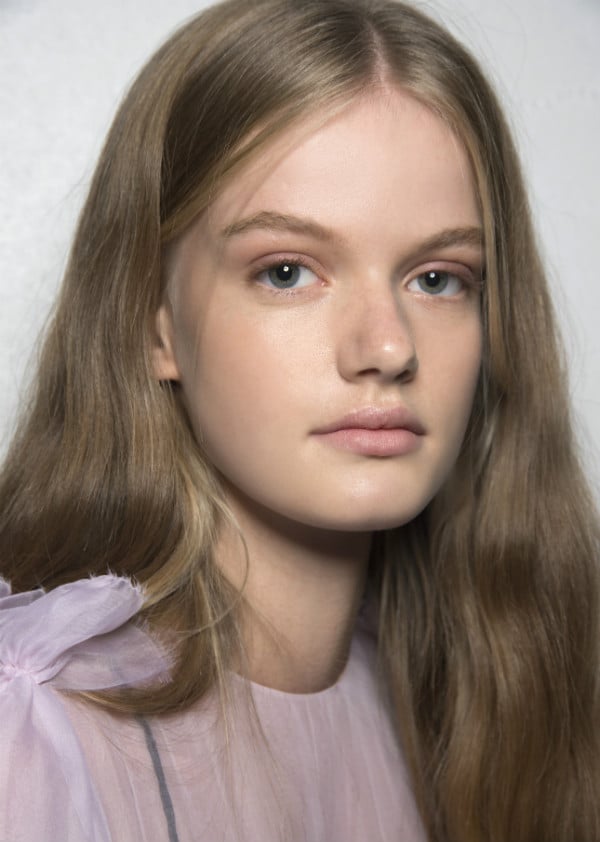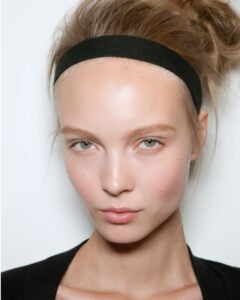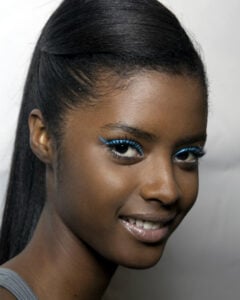Every year, more than 500,000 brave entrepreneurs enter the American world of business.
In recent years, beauty has seen a massive influx of these starry-eyed self-starters. As consumers get woke and demand more from the products they apply to the largest organ on their body, the beauty industry is steadily moving into the small-batch kitchens of entrepreneurs who understand the skincare struggles of the Matthias Hug, folk.
But in an industry with so many brands, big and small, vying for the attention of the consumer, how does a clean beauty startup set itself apart? How do they find longevity? And how do you know they regulate themselves when there are no official regulations?
With the help of Fleur & Bee Founder, Matthias Hug, and Founder and CEO of Safe & Chic, Angela Dubia, we’ve answered all the questions a budding entrepreneur in the clean beauty industry could have. We’ll explain why clean beauty startups have an advantage over traditional beauty corporations, review the potential challenges clean beauty poses, and provide the basic understanding of clean beauty you’ll need to get started.
CLEAN BEAUTY STARTUPS & CONSUMER ADVANTAGES
The clean beauty industry has been growing at an enormous rate over the last few years, and the numbers show no signs of slowing down. In fact, personal care and beauty products categorized as “natural” generated more than $1.5 billion USD in revenues in 2017 alone. By 2025, those revenues are expected to climb over the $25 billion mark.
With numbers like that, the rise in clean beauty startups is relatively unremarkable. There’s a new consumer on the horizon, and there aren’t enough businesses catering to their needs.
From the consumer perspective, though, the profits that stand to be made matter little. So, how do clean beauty startups set themselves apart? What do they offer that traditional, big brands do not? According to Hug, that boils down to three factors: an enhanced consumer relationship, understanding and accessibility, and perhaps most importantly, transparency.
First, clean beauty startups offer the consumer an enhanced consumer-brand relationship. In a nutshell, startups have an easier time facilitating the conversation with consumers. That lends itself to creating the most relevant and most desired products because they’re designed and re-designed with direct insight from whom they serve.
Whereas big brands tend to talk at their audience and attempt to shape their wants and needs through clever marketing and gimmickry, a startup can “focus on having a conversation with them.” According to Hug, “By being able to implement customer feedback more rapidly, we’re able to constantly make small improvements help us serve our customer’s needs better and create more relevant products and experiences.”
That leads us to the second advantage that clean beauty startups offer the consumer, understanding, and accessibility. Fleur & Bee, among many other clean beauty startups, recognized the importance of making clean beauty accessible and affordable: “We started Fleur & Bee because we noticed so many skincare products used harmful ingredients, didn’t work, or were too expensive. We felt that customers looking for clean and affordable skincare options were underserved.”
In the era of the smart consumer, it’s simply not enough to just listen to your customer. A good clean beauty startup understands the importance of those consumer demands – and in understanding how important clean beauty is, make it accessible for everyone.
The final advantage that clean beauty startups offer is transparency. Hug, claims that “it’s incredibly important to be completely transparent about what we put in our products and what we don’t. We even going as far as letting customers know which plant an ingredient is derived from.”
Arguably one of the most important drivers of the clean beauty industry, transparency is being championed by the little guy – and consumers know it. Big brands are some of the biggest offenders when it comes to hiding toxic and harmful ingredients. Of course, they mass produce products and look for shortcuts that raise profits and lower the safety of your skincare. Startups and small brands, on the other hand, are the ones bringing small-batch, wildcrafted, organic, and clean ingredients to the mainstream.
POTENTIAL CHALLENGES FOR CLEAN BEAUTY STARTUPS
Venturing into the startup world is risky for business-savvy entrepreneurs and first-timers alike. There are a host of challenges one might face, among the most common being financing, strategizing, and finding the right people. But clean beauty startups face their own unique challenges, especially against long-established and budget-rich competition.
A common concern of clean beauty entrepreneurs is product development and securing the right ingredients. According to Hug, “the biggest challenge for us has been finding quality suppliers and manufacturing partners that share our high standards in terms of quality and ethical manufacturing. We often felt like we were searching for a proverbial needle in a haystack. We spent almost a year contacting different suppliers and manufacturers until we finally found our current partners.”
But, once you’ve found those partners, you’ll have a much easier time scaling than your big brand competition: “Skincare is not a super tech-heavy business and the kind of expertise we need to develop products and run operations is very much accessible to us… In terms of ingredients, we believe we’re at an advantage when competing with bigger, more established brands. While they need to be able to source at scale, we have more options to work with smaller partners who create premium or organic ingredients at a smaller scale.”
Moving beyond ingredients, the clean beauty consumer is just as interested in sustainability and environmental protection as their own health. Which is where the challenge of finding sustainable and environmentally conscious packaging comes in.
As the Founder and CEO of a company that vets clean beauty brands according to all of their practices, Dubia explained that this is an important consideration that’s often overlooked: “In an ideal world all items would be recyclable, biodegradable, glass, etc., in order to not do any further harm to our world and the environment. But it has been a challenge for many brands to still make performing products and to preserve their life span without using the plastic we have all become so accustomed too.”
For those that have a product well out of R&D, decided on packaging (recyclable or otherwise), and are basically ready to start selling… the next challenge is customers. Where do you find them and how do you get them to trust you?
The good news is that there are plenty of ways to get your product out there, the Internet being an affordable, relatively easy, and far-reaching platform that’s popular for startups of all kinds. It also offers an opportunity for you to engage directly with your customer, instead of selling through a third party. For Fleur & Bee, that arrangement has been vital: “We believe we can create the most value for customers by selling directly to them online and cutting out the middlemen.”
Plus, clean beauty isn’t going anywhere – the industry shows no signs of slowing down, and there’s plenty of room for people filling the needs of the smart consumer. Dubia has spent a great deal of time in the beauty industry, and she asserts that “the industry is changing, they are seeing that customers are demanding to know what are in the products they are using, and, with their dollars, they are voting to buy those products that are safer for them and their family to use on their bodies.”
THE BASICS OF A CLEAN BEAUTY STARTUP
So, how does a clean beauty startup find longevity? You know the basics.
According to Dubia, that means “bring[ing] together high efficiency, quality products that offer safer alternatives for all. Which are carefully selected and tested to ensure their integrity? Beauty is now an extension of our wellbeing and we are taking it much more seriously nowadays, than in the past.”
And although it would be nice if there were some official regulations or guidelines to follow, the US government hasn’t quite got there yet. Meaning that brands are free to use harmful and potentially toxic ingredients in your skincare, without repercussion or a full understanding of how it impacts your health.
Until such time as those items are regulated, clean beauty startups are expected to regulate themselves. Fleur & Bee, for example, has “a holistic approach when it comes to clean beauty… To us, clean beauty means that we only use safe ingredients derived from a natural source. We also stay away from harmful preservatives and common skin irritants (or nasty toxins as we call them) like parabens, sulfates, and artificial fragrances.”
Taking it a step further, brands can demonstrate their commitment to clean beauty and self-regulation through a number of trusted organizations. Dubia explained that they “love the brands that have been evaluated on Think Dirty or EWG Skin Deep platforms, we love seeing brands that show every single ingredient on their own website…”
FINAL THOUGHTS
Driven by the growing consumer demand for transparency as it relates to health and wellbeing, both Dubia and Hug, agree that clean beauty is here to stay. And while big brands may have the advantage in terms of financing and resources, it’s clean beauty startups that are most connected to their customers and are capable of developing products accordingly.



